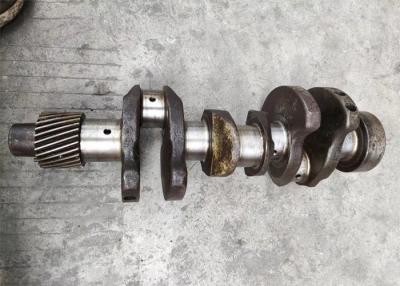





| Price | Negotiated |
| MOQ | Negotiable |
| Delivery Time | 5 - 8 work days |
| Brand | Yanmar |
| Place of Origin | Japan |
| Model Number | 3TNE84 3TNE88 3TNV88 |
| Packaging Details | Neutral Package or Fumigation Free |
| Payment Terms | D/P, T/T |
| Supply Ability | 200 pieces |
| Flywheel screw | Six | Place of Origin | Japan |
| Crankshaft teeth | 28 | Engine code | 3TNE84 3TNE88 3TNV88 |
| Size | Standard | Packaging Details | Neutral Package or Fumigation Free |
| Material | Metal | Model Number | 3TNE84 3TNE88 3TNV88 |
| Supply Ability | 200 pieces | Brand Name | Yanmar |
| Payment Terms | D/P, T/T | Price | Negotiated |
| Delivery Time | 5 - 8 work days | Excavator code | PC30 PC35 |
3TNE84 3TNE88 3TNV88 Diesel Engine Crankshaft 729120-21700 For Excavator PC30 PC35
Specification
| Item name | Diesel Engine Crankshaft |
| Main bearing bush | 40 |
| Connecting rod bearing | 38 |
| Application | Engineering Machinery Engine |
| Condition | Original Used |
| Crankshaft Stroke | 98 |
| Car model | PC30 PC35 |
| Quality | High quality |
| Engine type | Diesel |
Description
Bearing Pressures and Stresses in Crankshaft
The
bearing
pressures
are
very
important
in
the
design
of
crankshafts.
The
maximum
permissible
bearing
pressure
depends
upon
the
maximum
gas
pressure,
journal
velocity,
amount,
and
method
of
lubrication
and
change
of
direction
of
bearing
pressure.
The following two types of stresses are induced in the crankshaft.
1. Bending stress
2. Shear stress due to torsional moment on the shaft.
Function of crankshaft
Most crankshaft failures are caused by a progressive fracture due to repeated bending or reversed torsional stresses. Thus the crankshaft is under fatigue loading and, therefore, its design should be based upon endurance limit. Since the failure of a crankshaft is likely to cause serious engine destruction and neither all the forces nor all the stresses acting on the crankshaft can be determined accurately, therefore a high factor of safety from 3 to 4, based on the endurance limit, is used.
They are responsible for transforming the linear motion of the piston into the rotational motion. This specific part of the engine is made with the process of forging the alloy of iron ore called steel.
While
visually
inspecting
the
crankshaft,
you
can
find
the
rod
bearings
are
nearly
offset
or
eccentric.
Here
the
offset
of
the
shaft
transforms
the
reciprocating
motion
(up
and
down)
of
the
piston
in
the
rotating
motion
of
the
crankshaft.
Most often the shaft is drilled with minute holes which feed the engine with the oil necessary for smooth operations. Sometimes, this mechanical part consists of counterweights which help in balancing the system and the weight of the connecting rod. It also ensures to balance the force while rotation of the moving parts.
Every engine is designed specifically and so is the crankshaft. Its design varies with the size and number of cylinders in the engine. Featuring an example, in a four-stroke engine, the crankshaft will have four crank throws. These throws connect the four pistons and are efficiently connected to the flywheel of the engine.
While
driving
the
engine
or
during
the
combustion
cycle
the
crank
throw
works
as
a
lever
arm,
which
pushes
and
pulls
the
piston.
This
considerably
creates
a
successive
rotational
motion
in
the
engine.
The crankshaft helps the piston to complete its rotation and the throw will return the piston at the top of the cylinder. This product needs very sleek designing while production with respect to its weights and balancing. Such engineering is necessary to reduce the vibrations in the engine. Such, vibrations can be very harmful to the vehicle and can even lead to major accidents.


